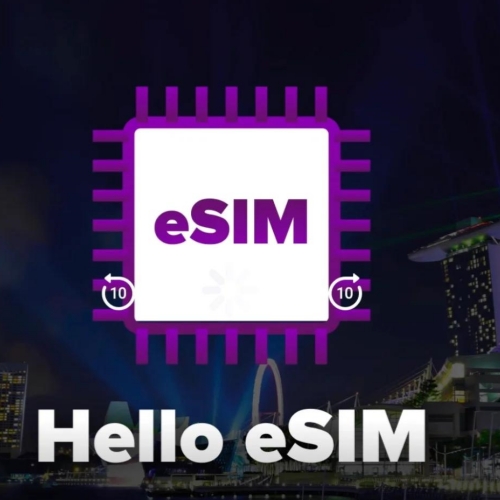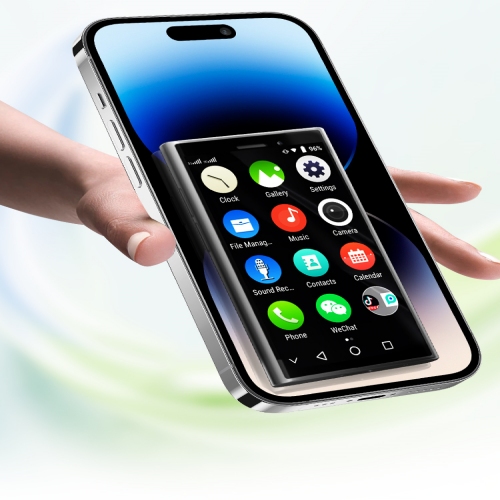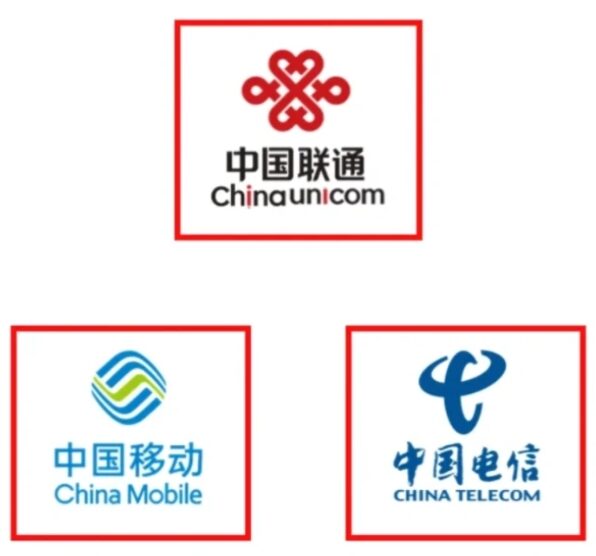Big news for China travelers: China Mobile, China Unicom, and China Telecom finally launched eSIM services in November 2024 after years of delays. China's three major carriers got approval on October 13, 2025, to begin commercial eSIM mobile trials nationwide. For tourists tired of spotty pocket WiFi or tedious physical SIM sign-ups, this sounded like a win—until the catch: foreign passport holders can’t use these domestic carrier eSIMs. Unsurprisingly, a Google search for "China eSIM" now points most travelers to specialized tourist-focused providers.
If that Google search brought you here, you’re in luck. We’re cutting through the noise to answer your top questions: Which tourist eSIMs actually work in busy spots like Beijing’s subway? How do you avoid day-one connectivity disasters? This guide breaks down 7 tested providers, tailored picks for every travel style, and simple setup tips—no fluff, just the practical info to keep you connected. Let’s dive in.
Why Foreign Travelers Can't Just "Get a Chinese eSIM" (The Identity Barrier Explained)

eSIM
China's telecommunications system operates under strict real-name registration laws dating back to a 2015 anti-terrorism measure. Every SIM card—physical or digital—must be tied to a government-issued identity document.
Here's what that means for different types of visitors:
| Can Get China Carrier eSIM? | Chinese Citizens | Foreign Residents | Foreign Tourists |
|---|---|---|---|
| China Mobile/Unicom/Telecom | ✅ Yes | ✅ Yes (with residence permit) | ❌ No |
| International Travel eSIM | ✅ Yes | ✅ Yes | ✅ Yes |
Chinese citizens use their national ID. Foreign residents who live in China can register using their passport plus a residence permit. But tourists passing through? The local carrier system simply doesn't accommodate you.
The good news: international eSIM providers have filled this gap perfectly. They operate through partnerships with china mobile and other networks, but handle registration outside China's domestic system. You get the same network access without the bureaucratic headache.
China Travel eSIM Providers Compared: 7 Options Tested by Real Travelers
After testing multiple providers across Beijing, Shanghai, and Chengdu in March 2025, here's what actually performs well:
| Provider | Price Range | Data Type | Speed (Tested) | Western App Access | Support | Our Score |
|---|---|---|---|---|---|---|
| Trip.com | $0.49-5.45/day | 1GB/day refresh | 50-100 Mbps | ✅ Built-in | 24/7 Chat | ⭐⭐⭐⭐⭐ 9.2/10 |
| Nomad | $5.20/day | 3GB/day pool | 40-80 Mbps | ❌ Need VPN | Email only | ⭐⭐⭐⭐ 7.8/10 |
| Holafly | $44/30 days | Unlimited* | 60-90 Mbps | ✅ Built-in | 24/7 Live chat | ⭐⭐⭐⭐⭐ 8.9/10 |
| ByteSIM | $42/30 days | Unlimited | 70-120 Mbps | ✅ Built-in | Email + WhatsApp | ⭐⭐⭐⭐ 8.5/10 |
| Airalo | $4.50/1GB | Pay-per-GB | 30-70 Mbps | ❌ Need VPN | Email only | ⭐⭐⭐ 6.5/10 |
| eSIMX | $18/20GB | Large pool | 40-80 Mbps | ⚠️ Partial | ⭐⭐⭐⭐ 7.2/10 | |
| GlobaleSIM | $25/10 days | 2GB/day | 50-90 Mbps | ✅ Built-in | 24/7 Chat | ⭐⭐⭐⭐ 8.1/10 |
*Holafly's unlimited data plans throttle speed after 90GB/month to 256-1024 kbps
Testing methodology: Speeds measured on Beijing subway Line 1, Shanghai Bund area, and Chengdu metro during afternoon hours.
Best Pick for Different Travel Styles
🎒 Budget Backpackers (Spending under $30 for two weeks)
Recommendation: Trip.com 10-day plan ($5.45)
Why it works: The daily refresh system means you get 1GB fresh every morning at midnight. Never suddenly run out halfway through uploading your Forbidden City photos. I used this exact plan through 12 days in Yunnan province—worked perfectly even when staying in hostels that claimed to have "fast WiFi" but actually didn't.
"Lasted me through exploring Lijiang, Dali, and Shangri-La. Even posted daily Instagram stories without running out." — Sarah M., traveling from Australia
💼 Business Travelers (Need reliable high speed)
Recommendation: ByteSIM 30-day unlimited ($42)
Why it matters: No throttling policy means you can attend back-to-back Zoom calls without worry. Consistently fast cellular data across all major cities. Just be aware that even premium esim plans face network congestion during rush hours (7-9 AM, 5-7 PM)—that's a network reality, not a provider issue.
👨👩👧👦 Family Groups (Multiple devices)
Recommendation: Holafly 30-day plan ($44) with hotspot sharing
The advantage: Share data across 3-4 devices without buying separate plans for each family member. One parent keeps their phone as the hotspot hub, kids connect their tablets for entertainment during long train rides. Fair usage of 90GB/month is genuinely plenty for typical family use—that's roughly 3GB per day.
Pro tip: Keep one parent's physical SIM active for emergency calls home.
⏱️ Short Layovers/Transit (12-48 hours only)
Recommendation: Trip.com 1-day plan ($0.49)
The math is simple: cheapest single-day option available, instant activation when you land. Perfect for Beijing or Shanghai airport layovers where you need maps and messaging but won't be downloading movies.
Critical reminder: Install your esim plans BEFORE leaving home WiFi. Airport installation always takes longer than you expect when you're rushing to catch airport express trains.
Picking the right eSIM is just step one—read Will My Phone Work in China? 2025 Guide to SIM, Apps, and Connectivity to make sure your phone actually works there.
How to Install and Activate Your China eSIM (The Mistake-Proof Guide)
The installation process looks intimidating in provider emails, but it's genuinely just three simple phases.
Phase 1: Before You Buy - Device Compatibility Check
For iPhone Users (XR and newer models):
1.Open Settings → About → Available SIM(s)
2.Look for "Digital SIM" or "eSIM" mentioned anywhere
3.If you see "EID" listed, your device supports esim
For Android Users:
1.Dial *#06# from your phone app
2.Look for an "EID" number (32 digits long)
3.EID appearing = eSIM supported
The dual sim strategy that works best: Keep your home SIM active for receiving text messages—you'll need those for bank verification codes and two-factor authentication from services back home. Set the new eSIM as your primary data line once you're in China.
Phase 2: Installation (Do This BEFORE Your Flight!)
Here's the step-by-step process:
1. Receive your QR code via email (typically arrives 5 minutes after purchase)
2. Screenshot the QR code immediately and save it to your photo library—some providers limit reinstallations to 2-3 attempts
3. Install while connected to WiFi (this is critical—installation downloads about 2-5 MB of carrier profile data):
iOS: Settings → Cellular → Add Cellular Plan → Scan QR code
Android: Settings → Network & Internet → Mobile Network → Add Carrier → Scan the QR code
4. Label your new plan something obvious like "China Travel" so you don't confuse it with your home carrier
Common installation error you might see: "Unable to Complete Cellular Plan Change"—this almost always means you've lost WiFi connection. Move closer to your router or switch to a stronger network.
Phase 3: Activation (After Landing)
1.Turn ON Data Roaming (sounds counterintuitive, but necessary!)
- iOS: Settings → Cellular → eSIM line → Data Roaming toggle to ON
- Android: Settings → SIM cards → eSIM → Roaming toggle to ON
2.Set eSIM as your primary data source:
- iOS: Settings → Cellular → Cellular Data → Select your eSIM
- Android: Settings → SIM cards → Preferred SIM for mobile data → Select eSIM
3.Wait 2-3 minutes for network registration—you'll see signal bars appear at the top of your screen
4.Test immediately: Open WeChat or Baidu Maps (local apps connect first, usually within 30 seconds)
Emergency backup if nothing works: Restart your entire phone, wait five minutes, then check again. If still nothing, verify Airplane Mode is definitely turned off—sounds obvious but it happens more than you'd think when fumbling with settings during jet lag.
5 Mistakes That Will Ruin Your China eSIM Experience (Learned the Hard Way)
❌ Mistake #1: Installing eSIM Without WiFi Connection
The scenario: Bought my eSIM at the airport departure gate, tried installing while boarding started. Nothing worked. Panicked through the entire flight wondering if I'd been scammed.
Why it fails: eSIM installation requires active internet to download the carrier profile configuration. Airport cellular signals are often weak near gates, making installation fail silently.
The fix: Install while still at home or your hotel before heading to the airport. If you forgot, most Chinese airports offer 2 hours of free WiFi after passport registration at their information kiosks.
❌ Mistake #2: Forgetting to Turn On Data Roaming
The scenario: eSIM installed perfectly, but phone showed "No Service" after landing. Thought I'd received a defective plan.
Why it confuses people: Your china esim technically "roams" on Chinese networks (china unicom or china telecom), even though you specifically bought it for China. The term "roaming" makes travelers worry about extra charges—but your eSIM plan already includes all costs.
The fix: Settings → Mobile Data → eSIM → Data Roaming = ON. This won't trigger surprise billing. The roaming is already part of your prepaid package.
❌ Mistake #3: Choosing "Unlimited" Without Reading Fine Print
The scenario: Selected a plan advertising "unlimited data" and burned through Google Maps navigation for three days straight. By day four, internet slowed to barely usable speeds—pages took 30 seconds to load.
Why it happens: Many providers throttle your unlimited data plans after you hit their "fair usage" limit, often around 5GB. After that threshold, speeds drop to 256 kbps—slower than old 3G networks.
The fix: Always check the provider's Fair Usage Policy before purchasing. Look for phrases like "high speed data allowance" or "speed after XX GB." Here are the honest policies:
- ByteSIM: True unlimited, no throttling (genuinely rare)
- Holafly: 90GB/month before throttling begins (generous for most travelers)
- Trip.com: 1GB/day with daily refresh (transparent limit, never hidden)
❌ Mistake #4: Not Keeping Your QR Code Backup
The scenario: Accidentally deleted my eSIM profile while trying to adjust mobile data settings. The original email with installation instructions was buried deep in my spam folder, took 20 minutes of frantic searching to find.
Why this matters: Most providers allow only 2-3 reinstallations per purchased plan. Lose access to your QR code and you're stuck buying a completely new plan.
The fix:
- Screenshot the QR code → save to Photos app
- Forward the installation email to a secondary email account
- Upload QR image to cloud storage (Google Drive, iCloud, Dropbox)
❌ Mistake #5: Activating eSIM Too Early for Multi-Day Plans
The scenario: Purchased a 7-day travel esim plan on Monday for a Friday departure. Excitedly activated it immediately to "test" if it worked. By the time I landed in Shanghai Friday evening, I'd already burned through two full days of my validity period.
Why this happens: Activation timing varies by provider. Some start counting from first network connection (when you land in China). Others start from the moment of purchase, regardless of when you actually use it.
The fix:
- Install anytime you want (doesn't start the clock)
- Only activate (turn on cellular data for that line) when you physically land in China
- Check each provider's policy: Look for "Validity starts from..." in the plan details
Provider activation timing (verified March 2025):
- Trip.com & Nomad: Start when first connected to Chinese network ✅
- Holafly: Starts at time of purchase ⚠️ (activate immediately or wait to buy)
- ByteSIM: First connection ✅
The Two Digital Worlds of China (And Why You Need Special Connectivity)
Traveling in China means navigating two parallel digital ecosystems—and you'll need both.
The Local Apps You'll Need (work with any network):
| App | Function | Why You Need It |
|---|---|---|
| WeChat (微信) | Messaging, payment, coordination | Used by everyone—from taxi drivers to hotels. You’ll scan QR codes constantly. |
| Alipay (支付宝) | Universal mobile payment | Accepted everywhere—street vendors, metro stations, museum tickets. |
| DiDi (滴滴出行) | Ride-hailing | Works like Uber, automatically translates your destination for Chinese drivers. |
| Meituan (美团) | Food delivery | Ideal for late-night meals when you’re too tired to go out. |
| 12306 / Trip.com | Train booking | Essential for purchasing high-speed train tickets between cities. |
Need more China-friendly app suggestions? You’ll find them all in China Travel Apps Guide 2025: Essential Tools for Payment, Transport & Local Tips.
The Western Apps That Won't Load (without special access):
Messaging apps like WhatsApp, Telegram, and Signal fall under communication tools—blocked without VPN-enabled eSIMs. Social media platforms such as Instagram and Facebook are also inaccessible, along with streaming services like YouTube and Netflix. Even practical tools including Google Maps and Gmail are restricted under China's firewall, making alternative navigation and email options necessary for travelers.
Here's where it gets tricky. China's internet connection policies create what travelers call "access restrictions." Standard international roaming won't help—even if your physical sim card works for calls, you still can't access blocked apps without additional configuration.
I learned this the hard way outside Shanghai Railway Station. Spent 30 minutes trying to load Booking.com to find my hotel, not realizing the site wouldn't open at all. A kind local suggested I use Trip.com instead, but by then I'd already wasted precious time in the confusion of rush hour.
This is exactly why certain eSIM providers have become essential: they include built-in access to western apps, eliminating the need for separate VPN apps that often fail anyway.
eSIM vs Physical SIM vs Pocket WiFi: The Real-World Comparison
| Feature | Travel eSIM | Physical SIM Card | Pocket WiFi Device |
|---|---|---|---|
| Setup Time | 2 mins (scan QR) | 30-60 mins (find shop, queue, register with passport) | 10 mins (airport pickup) + return hassle |
| Upfront Cost | $0.49-5/day | $15-30 one-time | $5-10/day rental |
| Hidden Costs | ❌ None | ⚠️ Card deposit ($30-50) | ⚠️ Loss fee ($50-100), late return charge |
| Portability | Built into phone | Can swap between devices | Extra device (200g weight, needs daily charging) |
| Sharing | ✅ Hotspot function (drains battery) | ❌ Single device only | ✅ Up to 5 devices simultaneously |
| Network Quality | Direct cellular connection | Direct cellular connection | Cellular → WiFi (adds latency) |
| If You Lose It | Nothing lost (digital) | Lose deposit + need replacement | Lose $100-150 deposit |
| Subway Performance | ✅ Seamless | ✅ Seamless | ⚠️ Drops between stations |
"Used pocket WiFi for my 2019 China trip—constantly worried about battery dying and accidentally leaving it in restaurants. Second trip in 2025 with eSIM? Forgot I even had it, connection just worked." — Marco T., traveling from Italy
The physical sims approach supports esim in theory (you can always carry both), but the registration hassle at airports makes it impractical for trips under two weeks.
FAQ: Real Questions Travelers Ask About China eSIM (2025)
Q: Can I buy a China eSIM while already in China?
You can, but it depends on the provider. Trip.com and ByteSIM support instant activation via Wi-Fi, while Nomad may delay setup without strong connectivity. I once tried purchasing at Beijing Airport, and it worked only after connecting to the airport’s free Wi-Fi. So yes, possible—but best to buy before arrival.
Q: Which eSIM works best for Google Maps or Gmail?
If you rely on Google services, Holafly or ByteSIM are your safest bets. Both use Hong Kong-based servers that bypass China’s restrictions. Airalo, by contrast, struggles with blocked apps unless paired with an external VPN. Many travelers on TripAdvisor recommend testing these before leaving your hotel.
Q: How long does it take to activate a China eSIM?
Usually, activation takes 2–5 minutes, though it may stretch longer with weak Wi-Fi. Trip.com’s setup is the fastest—its app handles everything without scanning. My ByteSIM took around 7 minutes in a Chengdu café when the signal was spotty. Always activate under stable Wi-Fi to avoid issues.
Q: Can I top up my eSIM in China once data runs out?
Yes, and it’s quite simple. ByteSIM lets you add data using Alipay or WeChat Pay, which now accept foreign cards. Nomad supports top-ups via international payment gateways. Trip.com even allows topping up in English, no Mandarin needed.
Q: Do any eSIMs come with VPN access built in?
Yes, ByteSIM, Holafly, and GlobaleSIM all provide built-in VPN routing. They allow access to WhatsApp, Instagram, and Gmail without manual setup. However, speeds can drop slightly during busy hours. Still, it’s a game changer for foreign visitors who can’t install VPN apps in China.
Q: What happens if I switch phones after activating my eSIM?
Your plan won’t automatically transfer to the new device. Most eSIM providers allow one or two reactivations using the same QR code. Save that code in your cloud or email, because retrieving it later can take hours. I learned that lesson the hard way after resetting my iPhone in Xi’an.
Q: Can I use eSIM for both mainland China and Hong Kong?
Yes, but only some providers support both. ByteSIM and Nomad include Hong Kong and Macau coverage, while Trip.com focuses on mainland networks. This flexibility is useful for cross-border travelers flying between regions. Always check the provider’s coverage map before purchase.
Q: Do I still need a VPN if I use a China eSIM?
It depends on your habits. For chatting or light browsing, VPN-enabled eSIMs work fine. But for streaming or accessing work emails, a standalone VPN remains useful. Some travelers even keep both for backup—just in case the built-in tunnel slows down.

